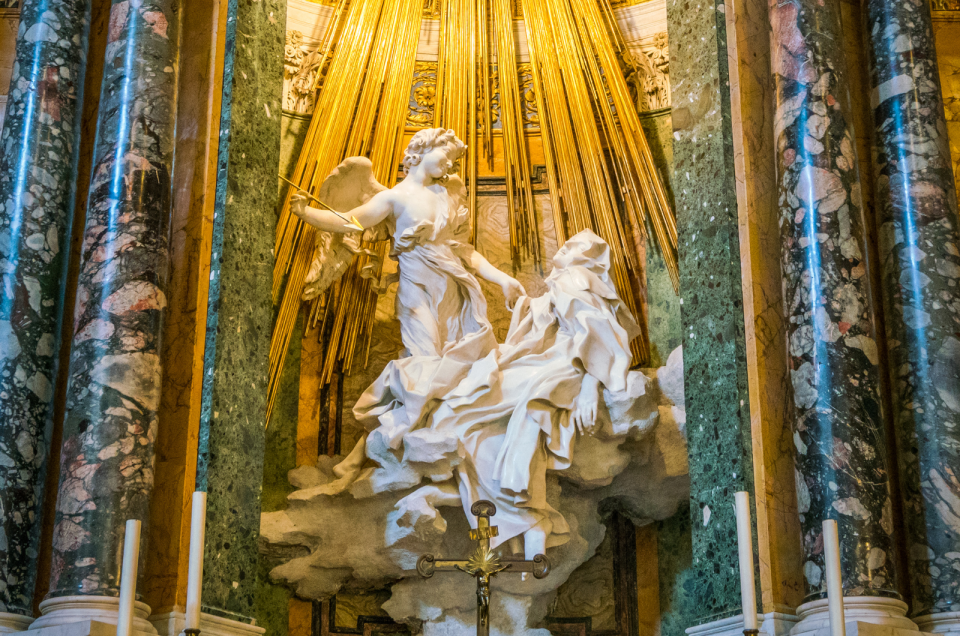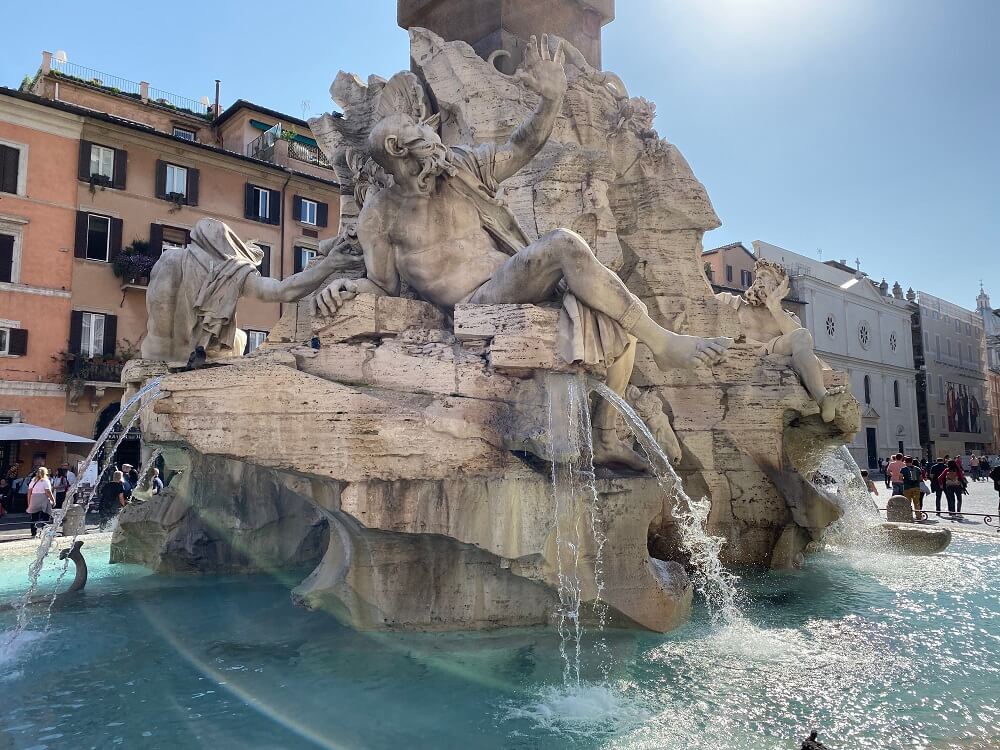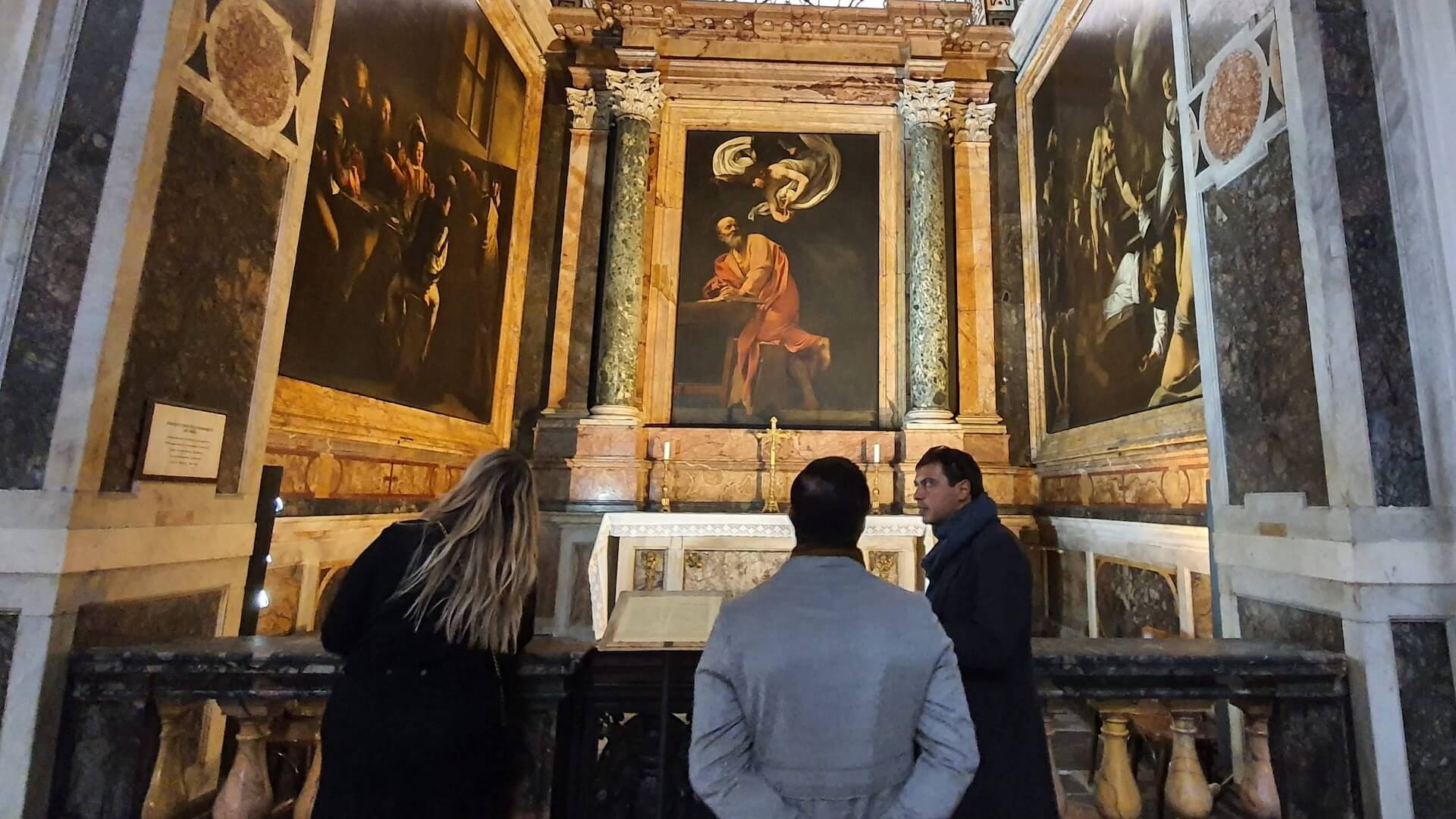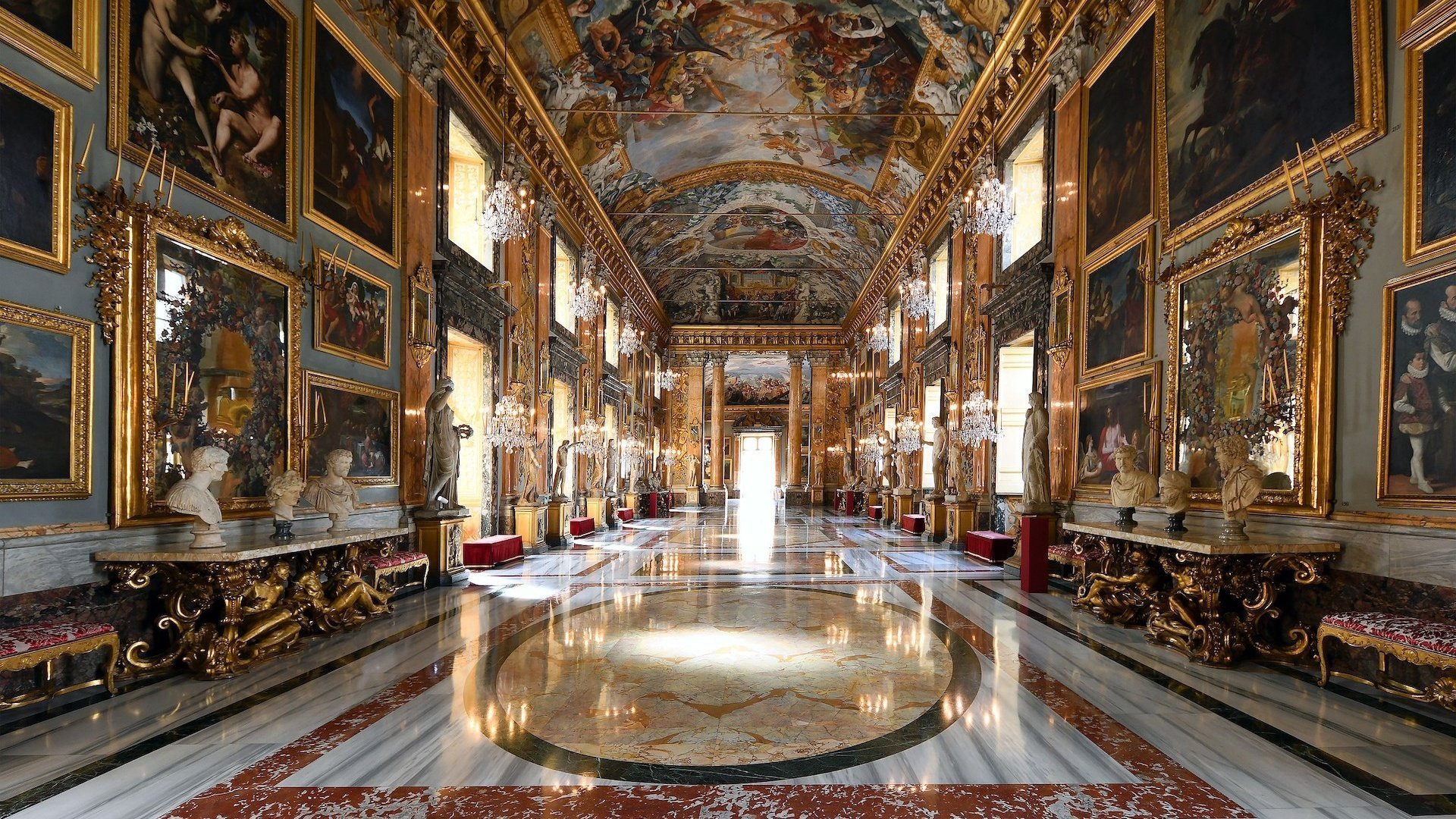Imagine stepping back in time to the late 16th century Rome. As you stroll along the streets of the city, you come across several magnificent newly constructed buildings and monuments that adorn the city. The monuments are so life-like and so full of movement that you can’t help but gaze at them in awe. What you are experiencing is the famous art that originated during the Baroque period in Rome.
The Baroque period followed that of the Renaissance. As we know, Florence was the center of the Renaissance but when it came to Baroque, it was Rome that took the center-stage. For around two centuries, masters in the art lived and worked under several Popes and the aristocracy of Rome. The straight lines of the Renaissance were replaced by flowing curves that gave structures a dynamic movement that had never been seen before. Baroque characterized not only monuments and sculptures but also paintings, music and fashion and like every art form, had seeped into the daily lives of the people. But in this article, let us focus only on sculptures and architecture and let us journey through some of the masterpieces of the Baroque period in Rome.
Santa Maria della Vittoria

The ceiling of the church of Santa Maria della Vittoria is covered in beautiful frescoes that date to the Baroque period.
First, we visit one of Bernini’s masterpieces: the Basilica of Santa Maria della Vittoria dedicated to the Virgin Mary and built from 1608 and 1620. While from the outside, the church appears to be one of the many churches of Rome, it is filled with artistic masterpieces from the Baroque period that will move you, to say the least. As you enter the chapels adorned with Majestic Corinthian columns, you are surrounded by frescoes and sculptures that are a reminder of the grandeur of Baroque art.
Even the floor is designed with beautiful painted marble, take for instance the unique paintings of the skeletons representing hope and despair.

The Dream of St Joseph is a magnificent sculpture from the Baroque period by famous sculptor Domenico Guidi.
As you walk under the colorful and awe-inspiring frescoes by Gian Domenico Cerrini that adorn the nave of the church, you come across Domenico Guidi’s magnificent sculpture, the Dream of St. Joseph. This masterpiece of the Baroque period depicts the St Joseph dreaming of an angel that made him aware of the Virgin Mary’s miraculous pregnancy. A little further away at the Cornaro Chapel, another more famous Baroque masterpiece awaits you: Bernini’s world-renowned and rather scandalous The Ecstasy of St Theresa. The beautiful sculpture that depicts St Theresa of Avila being pierced in the chest with a golden ray by an angel, has gone on to become of the most famous works of the Baroque period.
→ To take an exciting journey through Baroque Rome and view the city’s most famous Baroque masterpieces, take our Bernini & Borromini: Geniuses of the Baroque and Rivals to the Death tour!
Piazza Navona
As you move on from the church of Santa Maria della Vittoria and walk down the cobblestone streets of the center, your next stop is one of Rome’s most famous squares that houses several treasures of the Baroque period: the Piazza Navona!
Your eyes immediately move to the magnificent fountain that is located at the center of the square but first first, let’s take a step back to admire the two fountains in the southern and northern part of the square. The northern part of the square houses the Fountain of Neptune. For 300 years, the fountain stood bare, without any statues. It was only the late 1800s that the Italian government decided to adorn it with statues and the chosen one was that of the god Neptune with fighting an Octopus while his chariot is being pulled by horses. This sculpture is not as grand as the one that stands at the center of the piazza but what it lacks in grandeur, it makes up for in the intricacy of its designs.

Piazza Navona, one of the most famous squares of Rome, represents the grandeur and beauty of the Baroque period.
In the Southern Side of the piazza, we find a delightful work of the Giacomo della Porta, another famous artist of the Baroque period. The original design included the large basin, statues of the tritons, dragons and masks. It was Bernini who added the central sculpture of the man wrestling a dolphin and due to his peculiar features, he came to be known as ‘The Moor’, from which the fountain got its name.
→ Visit Piazza Navona and other iconic locations of Rome with our Golf Cart Tour of Rome!
Fountain of the Four Rivers
Now let’s move on to Bernini’s masterpiece and one of the best-known monuments of the Baroque period. The Fountain of the Four Rivers that is the highlight of Piazza Navona and stands proudly at its center is one of Rome’s most famous fountains.
This magnificent fountain features a collection of sculptures that are full of symbolic representations. At the four corners of the fountain are four nude statues, each representing a river from a different continent, the Danube representing Europe, the Ganges representing Asia, the Nile representing Africa and the Río de la Plata representing America. At the center of the fountain is an Egyptian obelisk brought to Rome during the reign of Domitian.
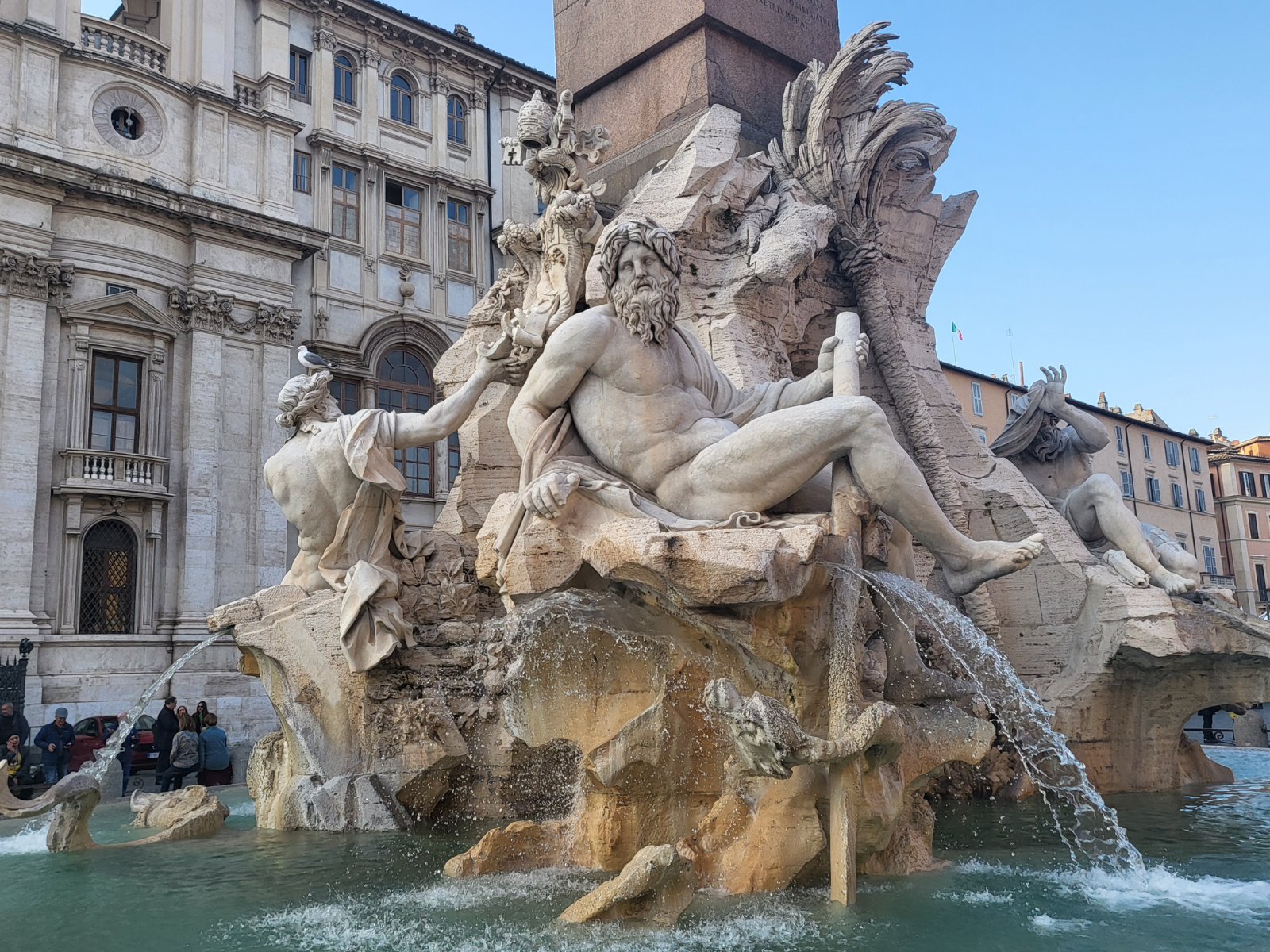
The magnificent Fountain of the Four Rivers is the highlight of Piazza Navona.
As you view these dynamic sculptures, that seem to have a life of their own, it is impossible not to lose yourself in the grandeur that is representative of the Baroque period. An interesting story behind the design of the fountain is that Pope Innocent X who commissioned the building o a magnificent fountain at the center of the square was not fond of Bernini and didn’t select his design. But the Pope’s niece convinced Bernini to place a model of his design on the path where she knew the Pope would pass.
Upon seeing the design, the Pope had no choice but to select it, because according to him, it was only possible not to employ Bernini’s designs if one hadn’t seen the.
Church of Sant’Agnese in Agone

The cupola of the Church of Sant’Agnese in Agone is decorated with a magnificent fresco that depicts the apotheosis of St. Agnes.
Finally, let’s step into the charming and equally magnificent church designed by Bernini’s rival, Borromini. What can only be defined as a jewel of the Baroque period, the church of Sant’Agnese in Agone stands in the eastern part of the Piazza Navona.
The cupola of the church is covered in a large impressive fresco depicting the apotheosis of St. Agnes. The church includes four altars, each of which contains a stunning sculpture of the Baroque period. A peculiarity of the church is that when you descend the staircase to the left, you arrive at a crypt where it is said that St. Agnes was martyred. Until this day you can see her skull preserved in the crypt.
Book a tour with Walks Inside Rome
At Walks Inside Rome, we provide a wide range of tours and experiences. The expertise of our guides in the history and culture of Rome provides you with the opportunity to discover the city’s most beautiful Baroque treasures alongside its other wonders.
You can book the tours directly online or by contacting us via email. We can’t wait to hear from you so we can customize your Roman experience and explore the Eternal City together!

